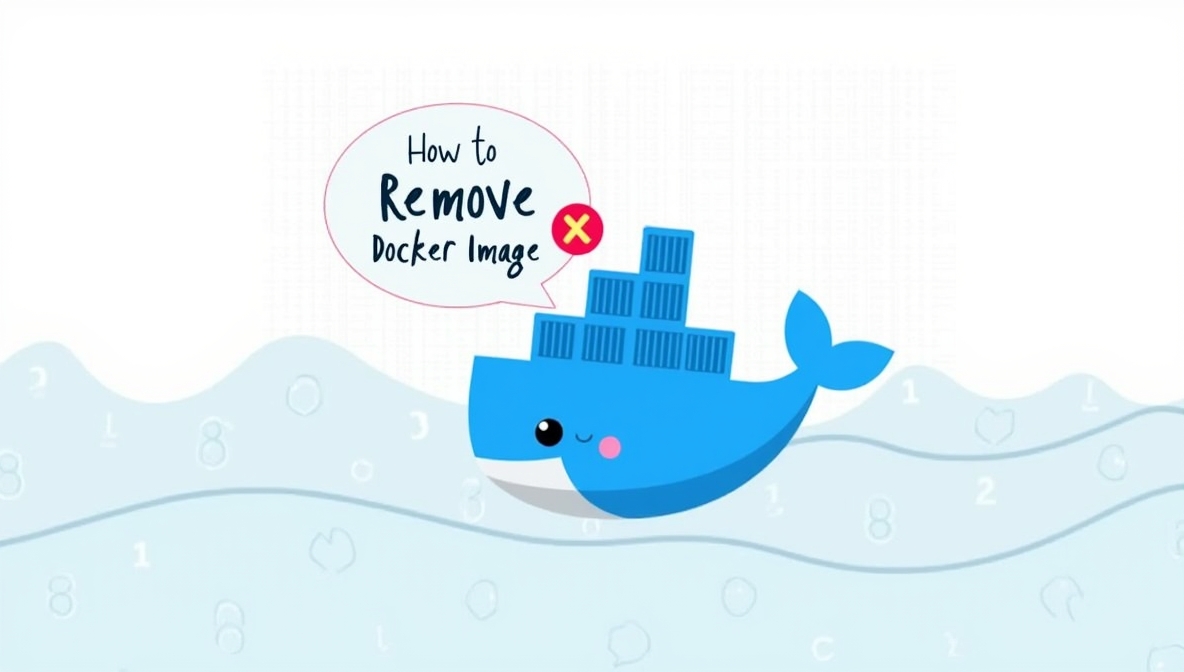How to Remove a Docker Image: The Complete Guide | OpsNexa
In the fast-paced world of DevOps and containerization, Docker has become the go-to solution for managing applications.
While Docker helps streamline app deployments, it also tends to accumulate a lot of old images over time — images that quietly consume disk space, slow down your system, and cause potential confusion when managing your containers.
At OpsNexa, we believe in keeping your development and production environments clean, efficient, and secure.
That starts with knowing how to properly remove Docker images when they’re no longer needed.
In this comprehensive guide, we’ll show you exactly how to remove Docker images — step-by-step, with best practices and troubleshooting tips.
Let’s dive in! 🚀
What Are Docker Images?
Before we jump into removal, let’s quickly recap:
A Docker image is a read-only template used to create containers.
Think of it as a blueprint — it contains your application code, libraries, environment variables, and runtime instructions.
Over time, as you build and pull multiple images, your system can get crowded with:
-
Outdated versions
-
Abandoned experimental builds
-
Duplicate images
✅ Regularly cleaning up Docker images is a healthy habit for every developer and DevOps engineer.
Types of Docker Images You Might Need to Remove
-
Dangling Images:
These are unused images that are not tagged and not referenced by any container. -
Unused Images:
Images that aren’t being used by any existing containers. -
Old/Obsolete Images:
Older versions you no longer need.
At OpsNexa, we recommend doing routine checks to keep your system optimized.
Prerequisites Before Removing Docker Images
Make sure:
-
You have Docker installed and running.
-
You have necessary permissions (
sudoaccess if needed). -
You have identified which images are safe to delete.
You can list all your Docker images by running:
Example output:
| Repository | Tag | Image ID | Created | Size |
|---|---|---|---|---|
| nginx | latest | abc123def456 | 2 weeks ago | 133MB |
| ubuntu | 20.04 | def456ghi789 | 3 months ago | 72MB |
How to Remove a Specific Docker Image
If you know the Image ID or Image Name, you can remove it directly.
1. Remove by Image ID
Find the Image ID you want to remove, then run:
Example:
2. Remove by Image Name
You can also delete by image name:
⚡ Pro Tip from OpsNexa: Always double-check before deleting production-critical images!
How to Remove Multiple Docker Images at Once
You can also remove multiple images in one command by specifying their IDs:
Example:
Efficient and clean!
How to Remove All Unused Docker Images
Want to do a quick cleanup of all unused images?
Docker makes it super simple:
You’ll be prompted to confirm.
✅ This removes dangling images only (not images associated with running containers).
If you want to aggressively clean up ALL unused images:
-a (or --all) flag removes:
-
All dangling images
-
All unused images (even if they were tagged)
🚨 Warning: Use
-acarefully — it can delete important images if you’re not careful!
How to Force Remove a Docker Image
Sometimes Docker may prevent you from removing an image because a container is using it.
You can force delete with:
Example:
✅ Force removal will delete the image even if it’s being used by stopped containers.
(But again, use this responsibly. At OpsNexa, we only recommend force deletion in staging/dev environments.)
How to Remove All Docker Images
Want a fresh start? Clear all images from your system:
Here:
-
docker images -qlists all image IDs. -
docker rmiremoves them all.
Alternatively, use:
This will:
-
Remove all stopped containers
-
Remove all unused networks
-
Remove all dangling and unused images
-
Remove build cache
✅ Think of this as a total system cleanup — powerful but dangerous if not intended.
Troubleshooting: Common Errors When Removing Docker Images
❗ Error: “conflict: unable to delete, image is being used by a stopped container”
Solution:
-
First remove the container(s) using the image:
Then retry deleting the image.
❗ Error: “no such image”
Solution:
-
Double-check the spelling of the image name or ID.
-
Make sure the image hasn’t already been removed or mistyped.
❗ Docker Daemon Not Running
Solution:
-
Start the Docker service:
Best Practices for Managing Docker Images | OpsNexa Tips
✅ Tag images clearly: Use meaningful tags (v1.0, test, prod) to avoid confusion.
✅ Regularly prune images: Set a reminder to run docker image prune weekly or monthly.
✅ Use Docker Disk Management Tools: Monitor Docker disk usage with:
✅ Backup before mass deletion: If you’re in a production environment, always double-check with your team before major deletions.
✅ Automate Cleanups: In CI/CD pipelines, automate Docker cleanup stages to prevent bloated build agents.
Final Thoughts: Keep Your Environment Clean with OpsNexa
Cleaning up Docker images might seem like a small task, but it leads to massive benefits in the long run — from faster builds and deployments to enhanced security and better system performance.
At OpsNexa, we believe that smart environments create smarter teams.
A few simple commands today can save hours of troubleshooting tomorrow.
You can also Contact OpsNexa for Devops architect and devops hiring solutions.
Now that you know how to remove Docker images efficiently, your system — and your future projects — will thank you! 🙌



